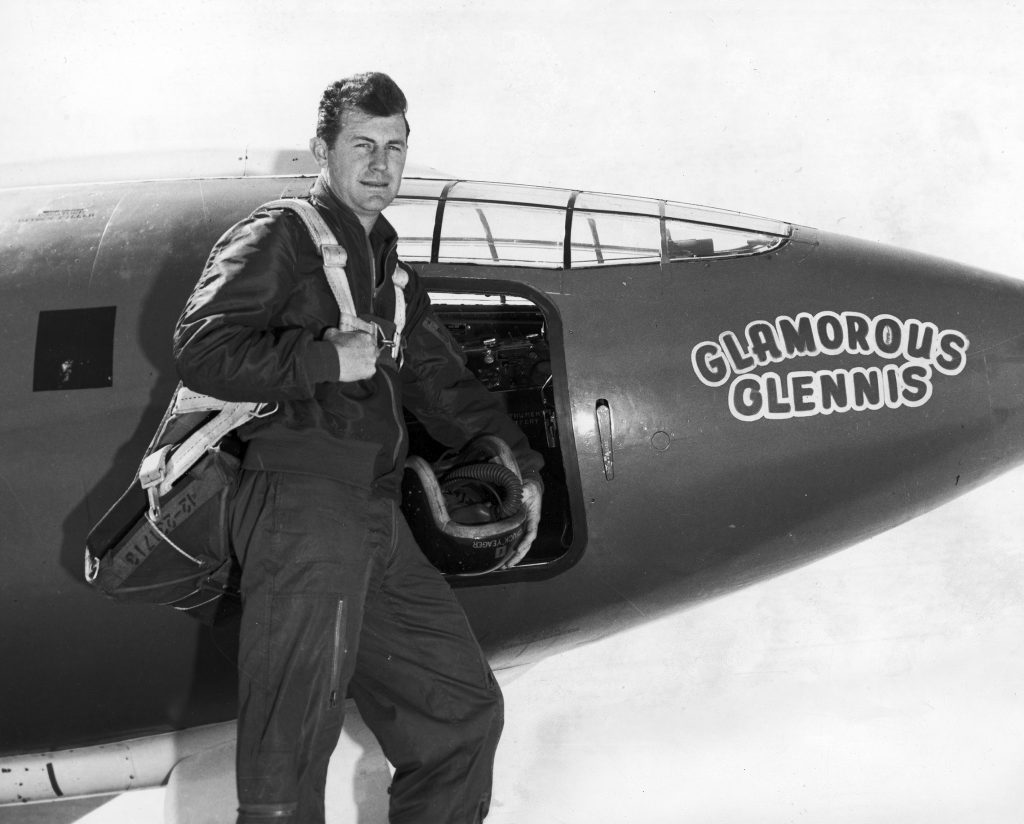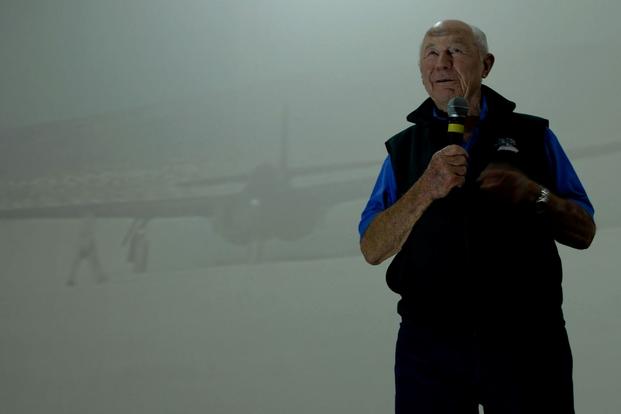
by Richard Sisk
The term “legend” suffers from overuse, but how else to describe Chuck Yeager?
The retired Air Force brigadier general, who died Monday at age 97, had a permanent eye twinkle and crinkly grin, coupled with a raspy voice right out of the West Virginia hollows, that only lent to his fighter jock aura.
When he chose to, Yeager also had a direct and self-effacing way of speaking about his exploits that made the hero-worshippers he attracted eager for more.
There was that time during World War II when Yeager, flying a P-51 Mustang, shot down a German Messerschmitt Me-62, the world’s first operational jet fighter, which wreaked havoc on allied aircraft when introduced late in the war.
In his much-followed Twitter feed, Yeager said in 2018, “First time I saw a jet, I shot it down. … [It was] not very sportsmanlike, but what the hell.”
In his autobiography, titled simply “Yeager,” he explained that the Me-62 had slowed down to make a landing, and he caught up with it as the jet was over the runway.
He is credited with shooting down 12 enemy aircraft during WWII, including five in one day. And he was himself shot down over France, leading to yet another astonishing chapter in a career that had many.
The French underground sent him on a perilous trek across the Pyrenees into Spain, where he somehow made it to Gibraltar, which was held by the British. The Brits sent him back to England, where he began battling the bureaucracy to get back into the war.
The rule was that pilots who had been shot down and escaped couldn’t be sent back into combat for fear that they would be shot down again and tortured to reveal the names of underground operatives.
Yeager and another pilot in a similar situation made enough of a nuisance of themselves that they were given a meeting with Gen. Dwight D. Eisenhower, the supreme military commander during the war.
An amazed Eisenhower told them, “I just wanted to meet two guys who think they’re getting a raw deal being sent home,” Yeager wrote in his autobiography.
He got the green light to fly again in the war (the only such pilot to do so), then went on to become a revered test pilot for the newly established Air Force on the strength of his innate sense of what an aircraft could and couldn’t do.
On Oct. 14, 1947, a B-29 bomber flying at 20,000 feet dropped then-Capt. Yeager and his stubby-winged, orange Bell X-1 rocket plane over California’s Mojave Desert. Yeager cranked it up to about 700 mph, becoming the first person to break the sound barrier.
His feat was immortalized in the 1979 Tom Wolfe book “The Right Stuff,” which would later be made into a movie with the same name. Actor Sam Shepard played Yeager in the movie, and the legend himself had a bit role as a bartender.
In attempting to define what he meant by the “right stuff,” Wolfe wrote, “As to just what this ineffable quality was, well, it obviously involved bravery. But it was not bravery in the simple sense of being willing to risk your life; any fool could do that. No, the idea seemed to be that a man should have the ability to go up in a hurtling piece of machinery and put his hide on the line and then have the moxie, the reflexes, the experience, the coolness, to pull back in the last yawning moment — and then to go up again the next day, and the next day, and every next day.”

Whatever the right stuff was, Yeager was “the most righteous of all the possessors of the right stuff,” Wolfe wrote.
Yeager himself dismissed talk of what the right stuff was and who had it. In 1985, he told Newsweek that it “just don’t mean a rat’s fanny.”
Charles Elwood Yeager always maintained that he was just a West Virginia boy from “so far up in the hollers’ that they have to pipe in the daylight.”
In his later years, Yeager delighted in using his gift at one-liners to reply to questions from his ardent followers. Sometimes, he used only one word.
One follower asked him whether the famed SR-71 Blackbird, the spy plane that flew at more than 2,000 mph, was “very different to fly than other planes.”
Yeager’s response? “Nah.”
Another asked how it felt to be the first to break the sound barrier. “It will never replace sex,” Yeager replied.
“Sir, have you ever seen a UFO?” one queried.
The answer: “No. I don’t drink before I fly.”
Yeager’s accomplishments set the stage for the exploration of space by today’s astronauts, and several of them paid tribute to him in their own Twitter feeds, including retired astronaut Scott Kelly, who flew four times in space.
Kelly, the twin brother of retired astronaut Mark Kelly, who was just elected to the Senate from Arizona, said on Twitter: “Test Pilot General Chuck Yeager has slipped the surly bonds of earth. A WWII fighter ace and the first human to break the sound barrier.
“He was a true legend with the right stuff. Fair winds and following seas, General Yeager,” he added.





